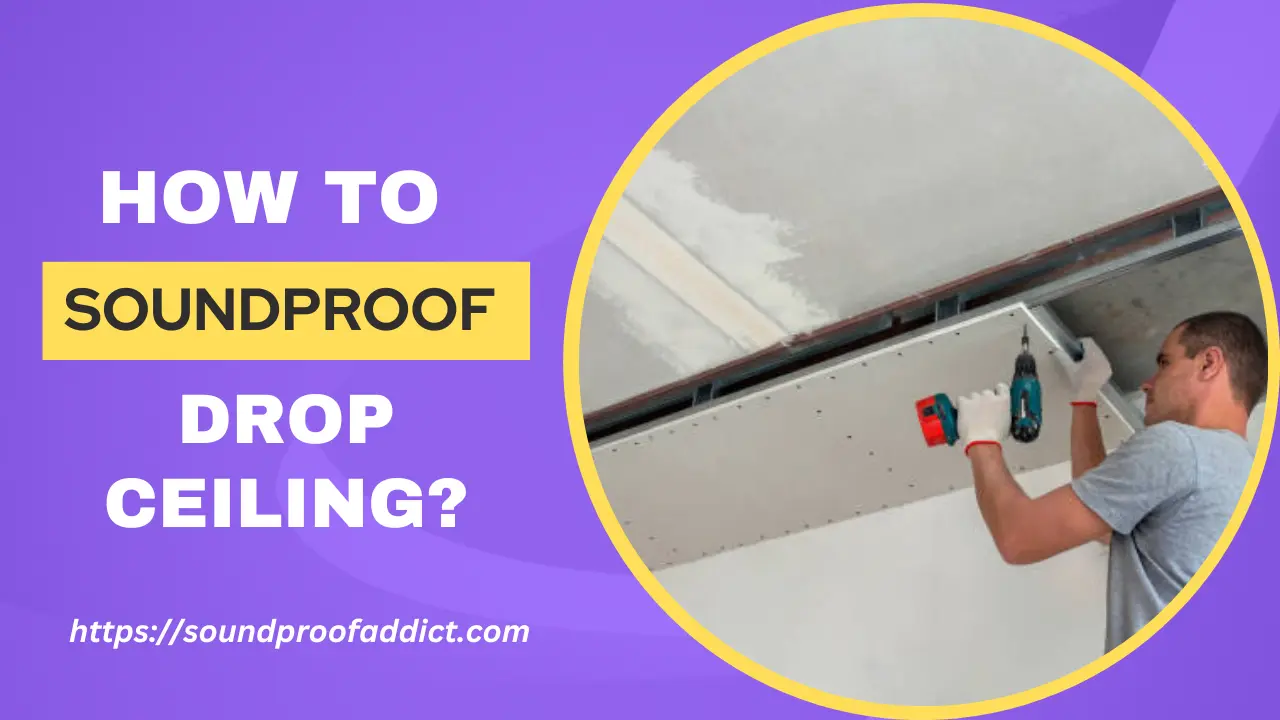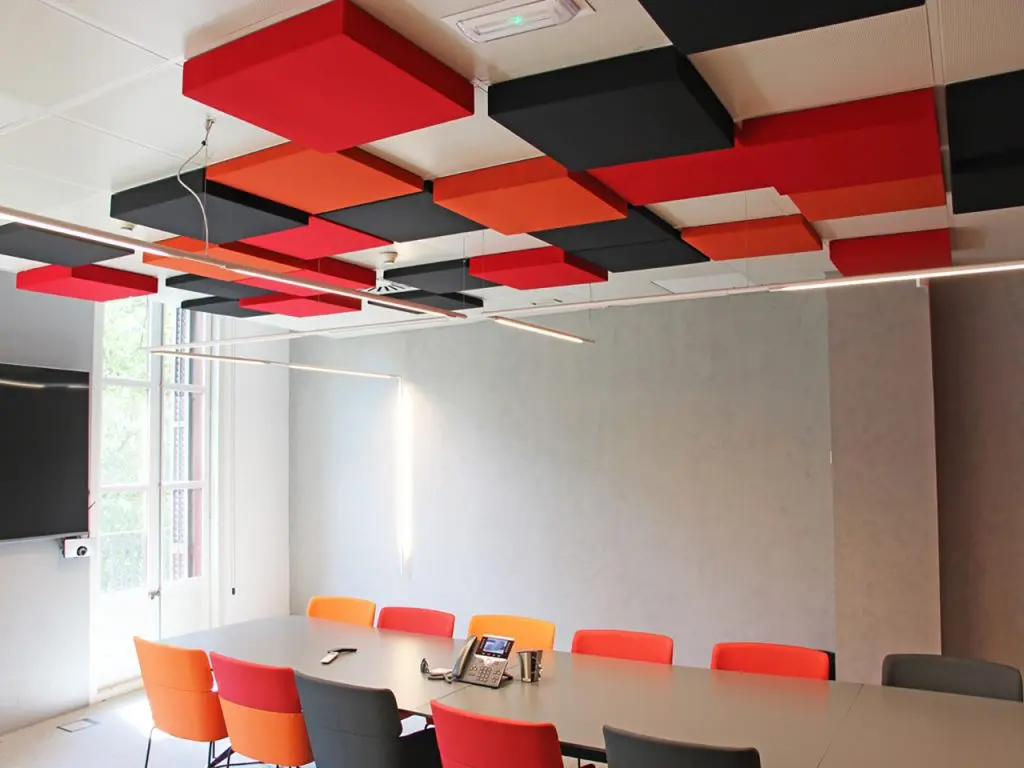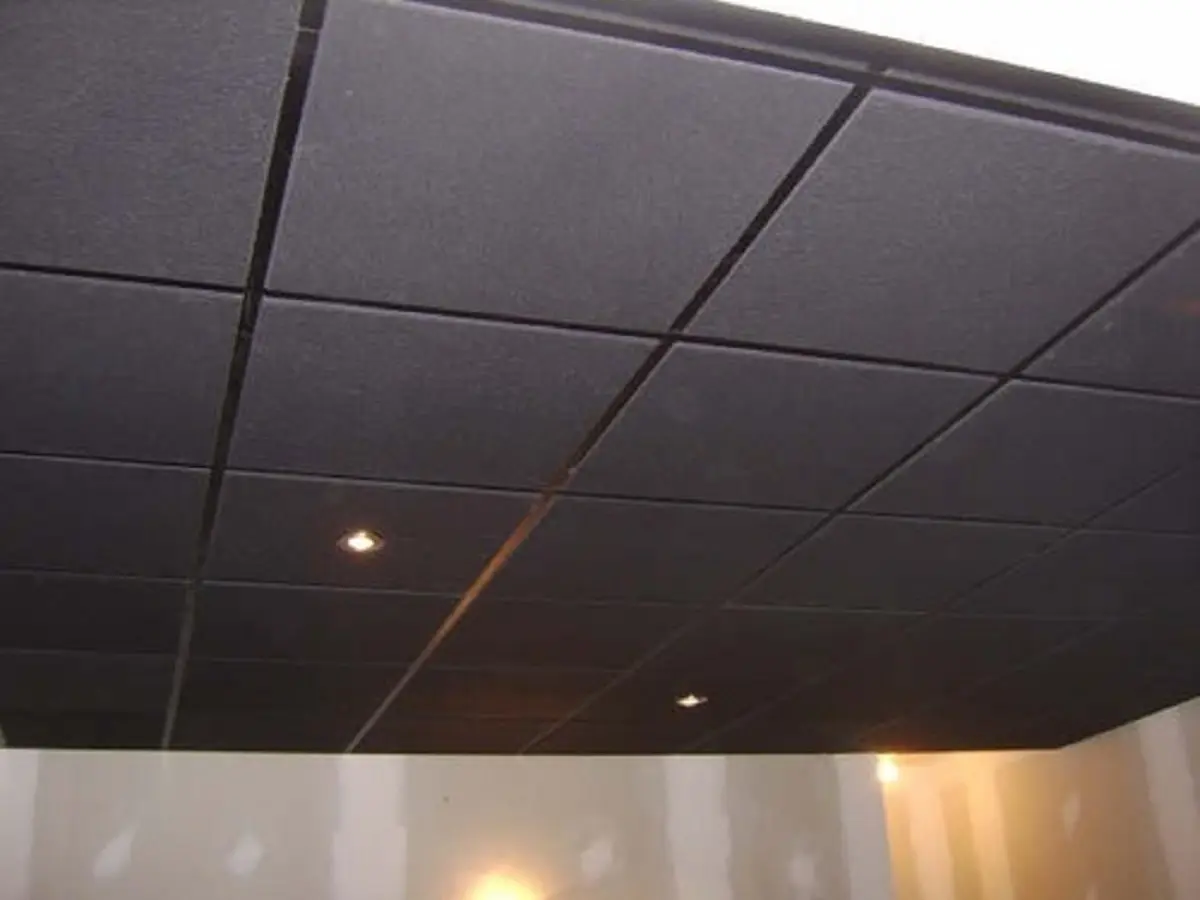How to Soundproof a Drop Ceiling? {5 Proven Ways}

Are you annoyed by the noise coming through your drop ceiling? Probably yes, that’s why you are here! The sound coming through a drop ceiling can be a real pain.
A typical drop ceiling is even not as soundproof as a usual ceiling. And if you’ve got HVAC equipment above the drop ceiling then more noise will definitely reach to you.
In addition, noise from upstairs feels like adding salt to your wound. So the only possible and the best solution is to soundproof the ceiling, but how would you do it, which technique would you use and what if you are on a low budget?
Well, stick around because I’m about to share 5 effective ways to soundproof a drop ceiling, including some wallet-friendly options you can handle yourself. But before we dive into that, let’s set the stage…
Are drop ceilings soundproof?
No, drop ceilings are not soundproof. This is because they are not designed with soundproofing as their primary function.
They are primarily designed for aesthetic purposes and to provide easy access to utilities like electrical wiring and plumbing hidden above the ceiling.
Drop ceilings typically consist of lightweight ceiling tiles or panels, which are not designed to block sound effectively.
5 Proven Ways to Soundproof a Drop Ceiling
Finally, here are the five ways to soundproof a suspended ceiling:
#1 Attach NRC rated sound-absorbing panels on the ceiling

If you are looking for an affordable way to soundproof a suspended ceiling then attaching sound-absorbing panels directly to the ceiling is the best solution for you.
Acoustic panels are primarily designed for sound absorption and if you attach them to your drop ceiling they will absorb and reduce the sound coming from above, reducing their transmission.
But you need to be sure that you use panels that do a great job at it. So, how do you identify top-quality sound-absorbing panels?
Well by looking at their NRC rating. It is a rating that tells you how good a material is at sound-absorption, it ranges from 0 to 1 and the higher, the better.
So purchase some panels according to your drop ceiling size and attach them to the ceiling, most panels come with self-adhesive features so the installation is an easy process.
#2 Replace the ceiling tiles with sound-blocking tiles

Replacing the ceiling tiles with tiles that are designed for soundproofing is the best way to soundproof a drop ceiling. This method is uncomplicated but works really well to block sound. It is the best technique for soundproofing a ceiling from upstairs.
This technique involves replacing existing ceiling tiles with sound-blocking tiles. These tiles are designed with the main objective of blocking sound.
Standard ceiling tiles are often lightweight and porous, on the other hand, acoustic ceiling tiles are made from dense materials that help reduce the transmission of sound from one side of the ceiling to the other.
Their noise reduction capacities are measured in NRC and CAC, so pay attention to their NRC and CAC rating when looking for acoustic ceiling tiles. Aim to get tiles that have an NRC rating of above 0.7 and CAC rating of above 35.
Acoustic ceiling tiles with higher NRC (Noise Reduction Coefficient) and CAC (Ceiling Attenuation Class) ratings typically range in price from $3 to $7 per square foot.
If you want to know more about acoustic drop ceiling tiles than visit these sources:
- https://www.armstrongceilings.com/residential/en-us/project-ideas-and-installation/acoustic-drop-ceiling-tiles.html
- https://acousticalsolutions.com/what-are-acoustic-ceiling-tiles/
#2 Fill the gap between the floor above it and drop ceiling
The gap between the floor above and the drop ceiling is a prime pathway for sound to travel.
When sound waves from upstairs or HVAC units reach this gap, they can easily pass through the ceiling tiles and you can prevent this sound transmission by properly filling the gap between the floor above and the drop ceiling.
So to fill this gap you can use mineral wool insulation and this is the only material I would recommend for this.

And if you have a lot of pipes, ducts and air conditioning above the ceiling then you need to be attentive while filling. Here are the simple two steps process to do so:
- Use a ladder to reach the height of your drop ceiling and remove some ceiling tiles that allow access to the gap above.
- Now, by being careful with pipes, ducts and HVAC units, and insert the mineral wool insulation or polyester into the space above the ceiling.
- Once you’ve filled the gap properly, re-install the ceiling tiles, and you’re all set!
#3 Decouple the drop ceiling from the floor above and fill it with insulation
Well, you may have heard about decoupling the drop ceiling from the floor above to prevent sound vibrations from traveling through the structure and into the room below.
While this technique can do some help, decoupling the ceiling may not provide the result you are looking for.
So instead of just separating them you can go one step further and fill the gap between the decoupled drop ceiling and the floor above with sound-absorbing materials that soak up the sound and provide you the peace you aim for.
This technique is quite similar to the one that I mentioned just above, the only difference is decoupling.
I would recommend keeping a gap of 6 to 10 inches between the drop ceiling and the floor above and then filling this gap with mineral wool insulation. Follow the exact process that I taught earlier to fill the gap.
#5 Tackle the source of noise directly
When it comes to dealing with noise issues in a ceiling, sometimes the best approach is to address the source of the noise directly. It is like tackling the root of a problem rather than just the symptoms. This is the best way to soundproof a condo ceiling.
And it can be either costly or cost-effective depending on what the source of noise is. For example, if your source of noise is your upstairs then it is possible to do it for free of cost, however, if the source of noise is any HVAC units then it may cost you a couple of bucks to quiet that.
For tackling upstairs noise, a simple conversation with them, politely explaining how their noise is affecting you, can go a long way.
If that doesn’t work then you could offer them a sound-deadening mat for their floor, which could help reduce the noise coming into your space through the drop ceiling. If they’re not willing to cooperate, then soundproofing your drop ceiling becomes a more viable solution.
How To Soundproof a basement drop ceiling?
To soundproof a basement drop ceiling effectively, create a gap of 6-10 inches between the ceiling and the floor above, and then swap out the regular ceiling tiles with acoustic ones. This method is highly effective in reducing noise.
Alternatively, you can fill the gap between the floor above and the ceiling with mineral wool insulation. This material is fantastic at absorbing sound.
You can choose the approach that suits your needs and budget. If your budget allows, you can even combine both methods for maximum soundproofing.
Related: How to silence basement ceiling?
FAQs: Soundproof a suspended ceiling
Q1. Can you soundproof the drop ceiling?
Ans: Yes, you can soundproof a drop ceiling. Replacing the ceiling tiles from the drop ceiling with sound-blocking ceiling tiles is one of the best ways to soundproof a drop ceiling.
Q2. Is a drop ceiling more soundproof than drywall?
Ans: No, a drop ceiling is not more soundproof than drywall. Drywall is generally better at soundproofing than a drop ceiling due to its density and thickness, which block sound more effectively.
Q3. Can you put SONOpan on the drop ceiling to soundproof it?
Ans: Yes, you can put SONOpan on the drop ceiling to soundproof it, but you need to do it strategically. However, I would not recommend putting SONOpan on the drop ceiling.
Q4. Can you soundproof inside a drop ceiling?
Ans: Yes, you can soundproof inside a drop ceiling.
Q5. Should you insulate the drop ceiling in the basement?
Ans: Insulating a drop ceiling in the basement is advisable to improve both soundproofing and energy efficiency.
Related posts:

There is a lot of knowledge on this subject that has to be discovered. Each and every one of the points you raised is expertly described. I’m glad you shared the article.